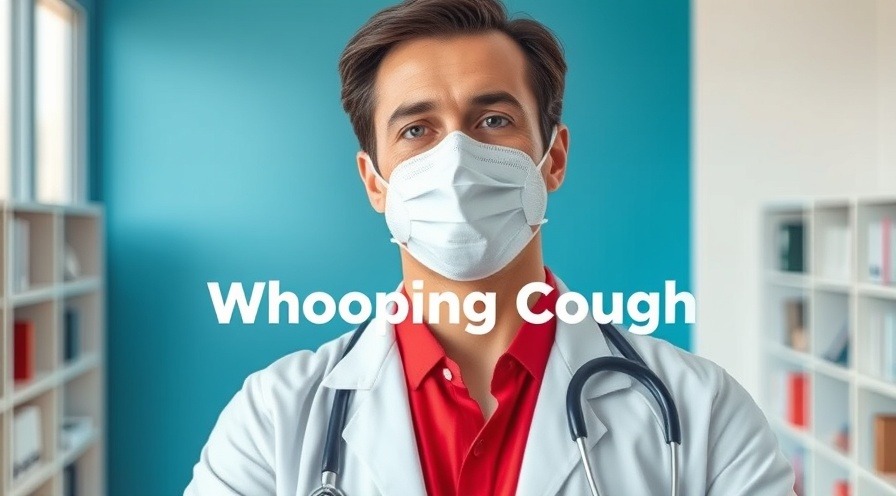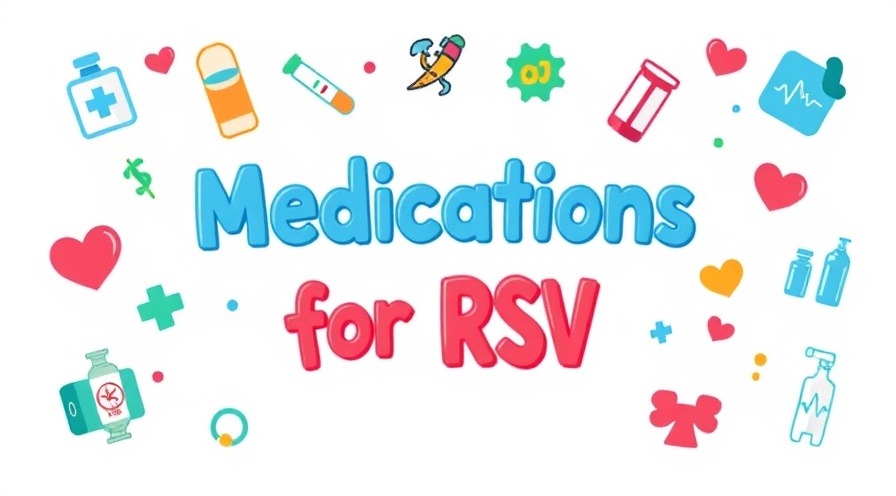
Understanding Whooping Cough: A Rising Concern
Whooping cough, also known as pertussis, is making headlines due to a significant uptick in reported cases across the United States. This highly contagious disease is not merely a historical footnote; it poses a real threat to public health. As Dr. Alyssa Kuban pointed out in a recent discussion with the AMA, there were over 35,000 cases of pertussis last year, marking the highest incidence in more than a decade.
In 'Whooping cough FAQ: Treatment for whooping cough symptoms, vaccine safety and pertussis in children', key insights were shared about the resurgence of whooping cough and the vital role vaccines play in preventing the disease.
Rising Cases in the United States
According to the U.S. Centers for Disease Control and Prevention (CDC), whooping cough (pertussis) cases have seen a significant resurgence in recent years, returning to pre-pandemic levels. As of April 2025, the CDC reported 8,485 cases nationwide, more than double the 4,266 cases recorded during the same period in 2024. By October 2024, the case count had risen to 18,506, a fivefold increase from the 3,382 cases reported at the same time in 2023. This marks the highest number of infections since 2014, with 2012 being the most recent peak year at 48,277 cases.
Dr. Thomas Murray, a pediatric infectious diseases specialist at Yale Medicine, notes, “Levels of pertussis dropped dramatically when we were all masking, and now this huge increase is getting us back to pre-pandemic levels, and probably a little above that.” He highlights that the cyclic nature of pertussis, which peaks every two to five years, contributes to this resurgence, alongside declining vaccination rates post-COVID-19.
What’s Behind the Resurgence?
Several factors contribute to the rise in whooping cough cases. First and foremost, they tell us that the relaxation of pandemic health measures like mask-wearing has led to increased transmission rates. While masks effectively mitigated the spread of many illnesses, including whooping cough, their absence has enabled a return to pre-pandemic levels of circulation for this bacteria.
Additionally, the vaccine’s effectiveness wanes over time. The transition from the older DTP vaccine, which had more side effects, to the newer DTaP vaccine was a necessary move for safety, but it resulted in shorter immunity. Data shows that the protection from whooping cough drops significantly five years post-vaccination—down to around 71% after initially being about 98% effective.
Dr. Christopher Gill, an associate professor of global health at Boston University, points to the shift in the 1990s from whole-cell to acellular vaccines as a key factor.
“The second generation of vaccine turned out to have an unanticipated limitation, and that has been probably the main engine driving the resurgence,” he explains.
Acellular vaccines, while safer, are less effective at preventing transmission, allowing vaccinated individuals to become asymptomatic carriers.
Finally, immunization rates among children have been declining. A study revealed a notable drop in vaccination coverage among kindergarteners from the 2019 to 2021 school years. This is concerning, as vaccination is crucial in preventing whooping cough outbreaks.
The Importance of Vaccination
Vaccination plays a vital role in protecting against whooping cough, starting from pregnancy. Pregnant women are advised to receive the Tdap vaccine between weeks 27 to 36 of their pregnancy, providing babies with crucial immunity prior to their own vaccinations at 2, 4, and 6 months of age. Following this, additional doses are administered at 15 months and again before starting kindergarten. It’s a systematic approach designed to ensure robust protection as children grow.
The Misunderstanding of Risks
As Dr. Alyssa Kuban addressed, vaccine hesitancy remains a significant barrier. Many parents feel overwhelmed by negative information circulating on social media and elsewhere. It's essential to approach these conversations with empathy and understanding. Dr. Kuban emphasizes the importance of listening to parental concerns and providing factual data about the vaccine’s safety and efficacy. It's crucial for parents to realize that the consequences of whooping cough can be severe, especially for infants who can suffer from complications, including dehydration and breathing difficulties.
A Call for Awareness and Action
The message is clear: awareness around whooping cough and its vaccine is paramount. Parents, healthcare providers, and communities must come together to ensure that immunization rates improve. By informing families about the serious realities of whooping cough and emphasizing the role of vaccines, we can reduce the incidence of this disease and protect vulnerable populations.
Whooping cough is more than just an inconvenience; it can lead to serious health complications. Understanding the value of vaccination and the importance of maintaining healthy immunization rates will help safeguard not only our children but also the broader community. Making informed decisions about health is a cornerstone of well-being.
Final Thoughts
We all have the power to contribute to a healthier future. This article aims to present research-driven insights on vaccinations, empowering you to exercise your freedom of choice. Embrace a "trust but verify" approach—critically evaluate information, consult reliable sources, and make informed decisions about vaccinations for yourself or your children.
By sharing knowledge and thoughtfully selecting vaccinations, we can collectively foster a healthier future, protecting our loved ones from preventable diseases like whooping cough while cultivating a culture of informed health awareness.
Disclaimer: The information provided on this website is for general informational purposes only and should not be considered medical advice, diagnosis, or treatment. Always consult a qualified healthcare professional before making any decisions or taking actions related to your health, including but not limited to medical conditions, treatments, diets, supplements, or exercise programs. The content on this site is not intended to replace professional medical guidance. The website and its authors are not responsible for any actions taken based on the information provided.
 Add Row
Add Row  Add
Add 




 Add Row
Add Row  Add
Add 

Write A Comment